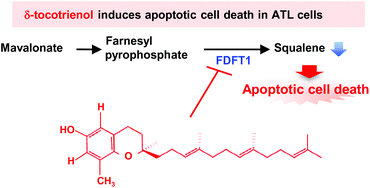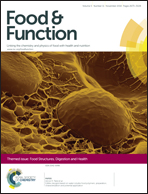Delta-tocotrienol induces apoptotic cell death via depletion of intracellular squalene in ED40515 cells
Abstract
Here, we examined the effect of tocotrienols (T3) on the growth of adult T-cell leukemia (ATL) cells. All three forms (β-, γ-, and δ-T3) inhibited cell proliferation in a dose-dependent manner; δ-T3 showed the strongest growth-inhibitory effect. δ-T3 increased the G1, G2/M, and subG1 populations and induced internucleosomal DNA fragmentation. δ-T3 treatment also increased the levels of cleaved caspase-3, -6, -7, -9, and poly-ADP ribose polymerase (PARP), and this was accompanied by downregulation of Bcl-2, Bcl-xL, and XIAP. Moreover, δ-T3 decreased nuclear p65 NF-κB levels, indicating downregulation of NF-κB activity. This cytotoxic effect of δ-T3 was abrogated by squalene (SQL) but not mevalonate (MVL), farnesyl diphosphate (FPP), geranylgeranyl diphosphate (GGPP), or cholesterol (CL). δ-T3 decreased intracellular SQL levels, and inhibition of de novo cholesterol synthesis did not affect the action of SQL. Furthermore, δ-T3 significantly decreased farnesyl-diphosphate farnesyltransferase 1 (FDFT1) expression. Taken together, it is evident that δ-T3, due to its ability to potently induce apoptosis via the depletion of intracellular SQL, shows the potential to be considered a therapeutic agent in patients with ATL.


 Please wait while we load your content...
Please wait while we load your content...